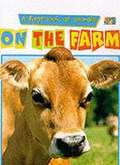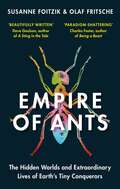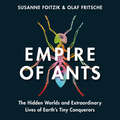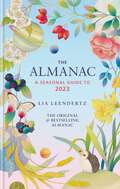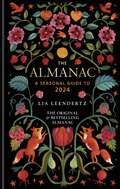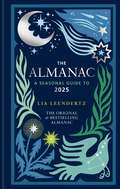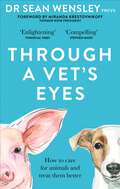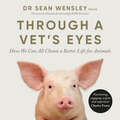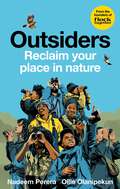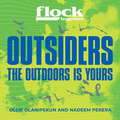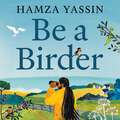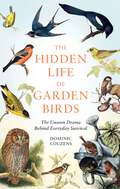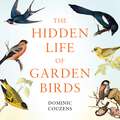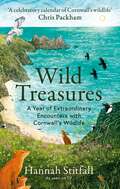- Table View
- List View
Showing to Win
by Carolyn HendersonBasic guide to showing horses, particularly in the United Kingdom.
On the Farm: A First Look at Animals
by Diane James Sara LynnDramatic photographs, charming illustrations and informative text give children essential first facts about the animal kingdom. Simple text explains how animals live, eat and tend to their young. A short quiz in the back of each book lets children test their new animal knowledge.
The Medieval Warhorse From Byzantium to the Crusades
by Ann HylandThe history and development of the medieval warhorse, its breeding and care.
In Search of the Missing: Working with Search and Rescue Dogs
by Mick Mccarthy Patricia AhernMick McCarthy has experienced first-hand the dangers, thrills, tragedies, and triumphs of search and rescue operations, which he has carried out on flood-swollen rivers, raging seas, through woodland, bog land, and on treacherous mountains, often in the dead of night. This book narrates the captivating story of his dogs, his life, and his adventures in the field, in search of missing persons.
Empire of Ants: The hidden worlds and extraordinary lives of Earth's tiny conquerors
by Olaf Fritsche Susanne Foitzik'Beautifully written and filled with mind-boggling wonders' - Dave Goulson, author of A Sting in the Tale'Thrilling, compellingly readable and paradigm-shattering' - Charles Foster, author of Being a Beast'Both expert and entertaining' - David Barrie, author of Incredible JourneysAnts have been walking the Earth since the age of the dinosaurs. Today there are one million ants for every one of us. The closer you get to ants, the more human they look: they build megacities, grow crops, raise livestock, tend their young and infirm, and even make vaccines. They also have a darker side: they wage war, enslave rivals and rebel against their oppressors. From fearsome army ants, who stage twelve-hour hunting raids where they devour thousands, to gentle leaf-cutters gardening in their peaceful underground kingdoms, every ant is engineered by nature to fulfil their particular role.Acclaimed biologist Susanne Foitzik has travelled the globe to study these master architects of Earth. Joined by journalist Olaf Fritsche, Foitzik invites readers deep into her world - in the field and in the lab - and will inspire new respect for ants as a global superpower.Fascinating and action-packed, Empire of Ants will open your eyes to the secret societies thriving right beneath your feet.
Empire of Ants: The hidden worlds and extraordinary lives of Earth's tiny conquerors
by Olaf Fritsche Susanne FoitzikAnts have been walking the Earth since the age of the dinosaurs. Today there are one million ants for every one of us. The closer you get to ants, the more human they look: they build megacities, grow crops, raise livestock, tend their young and infirm, and even make vaccines. They also have a darker side: they wage war, enslave rivals and rebel against their oppressors. From fearsome army ants, who stage twelve-hour hunting raids where they devour thousands, to gentle leafcutters gardening in their peaceful underground kingdoms, every ant is engineered by nature to fulfil their particular role.Acclaimed biologist Susanne Foitzik has travelled the globe to study these master architects of Earth. Joined by journalist Olaf Fritsche, Foitzik invites readers deep into her world - in the field and in the lab - and will inspire new respect for ants as a global superpower.Fascinating and action-packed, Empire of Ants will open your eyes to the secret societies thriving right beneath your feet.(p) Octopus Publishing Group 2021
The Almanac: THE SUNDAY TIMES BESTSELLER (Almanac)
by Lia LeendertzTHE ORIGINAL & SUNDAY TIMES BESTSELLING ALMANAC Reconnect with the seasons in Britain and Ireland with this month-by-month guide to the world around us - including key dates, tide tables and garden tasks; constellations and moon phases; sunrises, folk songs, seasonal recipes plus a 'bun of the month'; and - because 2023 will be a good year for planet spotting - the solar system and the zodiac.The Almanac: A Seasonal Guide to 2023 gives you the tools and inspiration you need to celebrate, mark and appreciate each month of the year in your own particular way. Divided into the 12 months, a set of tables each month gives it the feel and weight of a traditional almanac, providing practical information that gives access to the outdoors and the seasons, perfect for expeditions, meteor-spotting nights and beach holidays. There are also features on each month's unique nature, with this instalment following the swirling micro world of the garden pond through the year.You will find yourself referring to The Almanac all year long, revisiting it again and again, and looking forward to the next edition as the year draws to a close.This year's edition is illustrated by artist Whooli Chen.The geographical scope of The Almanac is Britain and IrelandPRAISE FOR THE ALMANAC:'Lia Leendertz's classic almanac never fails to delight' - The Herald'It's a perfect Christmas present' - Allan Jenkins, The Observer'The perfect companion to the seasons' - India Knight'Indispensable' - Sir Bob Geldof'This book is your bible' - The Independent'I love this gem of a book' - Cerys Matthews
The Almanac: THE SUNDAY TIMES BESTSELLER (Almanac)
by Lia LeendertzTHE ORIGINAL & SUNDAY TIMES BESTSELLING ALMANAC Reconnect with the seasons in Britain and Ireland with this month-by-month guide to the world around us - including key dates, tide tables and garden tasks; constellations and moon phases; sunrises, folk songs, seasonal recipes plus a 'bun of the month'; and - because 2023 will be a good year for planet spotting - the solar system and the zodiac.The Almanac: A Seasonal Guide to 2023 gives you the tools and inspiration you need to celebrate, mark and appreciate each month of the year in your own particular way. Divided into the 12 months, a set of tables each month gives it the feel and weight of a traditional almanac, providing practical information that gives access to the outdoors and the seasons, perfect for expeditions, meteor-spotting nights and beach holidays. There are also features on each month's unique nature, with this instalment following the swirling micro world of the garden pond through the year.You will find yourself referring to The Almanac all year long, revisiting it again and again, and looking forward to the next edition as the year draws to a close.This year's edition is illustrated by artist Whooli Chen.The geographical scope of The Almanac is Britain and IrelandPRAISE FOR THE ALMANAC:'Lia Leendertz's classic almanac never fails to delight' - The Herald'It's a perfect Christmas present' - Allan Jenkins, The Observer'The perfect companion to the seasons' - India Knight'Indispensable' - Sir Bob Geldof'This book is your bible' - The Independent'I love this gem of a book' - Cerys Matthews
The Almanac: A Seasonal Guide To 2018 (Almanac)
by Lia LeendertzTHE ORIGINAL & BESTSELLING ALMANACReconnect with the seasons in Britain and Ireland with this month-by-month guide to the world around us - including tide tables, sunrises and moon phases; garden feasts, wildlife and folklore; seasonal recipes, snacks and more.The Almanac: A Seasonal Guide to 2024 gives you the tools and inspiration you need to celebrate, mark and appreciate each month of the year in your own particular way.Divided into the 12 months, a set of tables each month gives it the feel and weight of a traditional almanac, providing practical information that gives access to the outdoors and the seasons, perfect for expeditions, meteor-spotting nights and beach holidays. This year's edition focuses on the natural wonders of the garden, celebrating the beautiful flora and fauna at your doorstep. There are also features on each month's unique nature, plus a flower and a snack of the month.You will find yourself referring to The Almanac all year long, revisiting it again and again, and looking forward to the next edition as the year draws to a close.PRAISE FOR THE ALMANAC:'Lia Leendertz's classic almanac never fails to delight' - The Herald'It's a perfect Christmas present' - Allan Jenkins, The Observer'The perfect companion to the seasons' - India Knight'Indispensable' - Sir Bob Geldof'This book is your bible' - The Independent'I love this gem of a book' - Cerys Matthews
The Almanac: A Seasonal Guide To 2018 (Almanac)
by Lia LeendertzTHE ORIGINAL & BESTSELLING ALMANACReconnect with the seasons in Britain and Ireland with this month-by-month guide to the world around us - including tide tables, sunrises and moon phases; garden feasts, wildlife and folklore; seasonal recipes, snacks and more.The Almanac: A Seasonal Guide to 2024 gives you the tools and inspiration you need to celebrate, mark and appreciate each month of the year in your own particular way.Divided into the 12 months, a set of tables each month gives it the feel and weight of a traditional almanac, providing practical information that gives access to the outdoors and the seasons, perfect for expeditions, meteor-spotting nights and beach holidays. This year's edition focuses on the natural wonders of the garden, celebrating the beautiful flora and fauna at your doorstep. There are also features on each month's unique nature, plus a flower and a snack of the month.You will find yourself referring to The Almanac all year long, revisiting it again and again, and looking forward to the next edition as the year draws to a close.PRAISE FOR THE ALMANAC:'Lia Leendertz's classic almanac never fails to delight' - The Herald'It's a perfect Christmas present' - Allan Jenkins, The Observer'The perfect companion to the seasons' - India Knight'Indispensable' - Sir Bob Geldof'This book is your bible' - The Independent'I love this gem of a book' - Cerys Matthews
The Almanac: A Seasonal Guide To 2018 (Almanac)
by Lia LeendertzThe original and bestselling almanacReconnect with the seasons in Britain and Ireland with this month-by-month guide to the world around us - including tide tables, sunrises and moon phases; wildlife and folklore; seasonal recipes and more.The Almanac: A Seasonal Guide to 2025 gives you the tools and inspiration you need to celebrate, mark and appreciate each month of the year in your own particular way.Divided into the 12 months, a set of tables each month gives it the feel and weight of a traditional almanac, providing practical information that gives access to the outdoors and the seasons, perfect for expeditions, meteor-spotting nights and beach holidays. And it's the ideal gift!You will find yourself referring to The Almanac all year long, revisiting it again and again, and looking forward to the next edition as the year draws to a close.PRAISE FOR THE ALMANAC:'Lia Leendertz's classic almanac never fails to delight' - The Herald'It's a perfect Christmas present' - Allan Jenkins, The Observer'The perfect companion to the seasons' - India Knight'Indispensable' - Sir Bob Geldof'This book is your bible' - The Independent'I love this gem of a book' - Cerys Matthews
The Almanac: A Seasonal Guide To 2018 (Almanac)
by Lia LeendertzThe original and bestselling almanacReconnect with the seasons in Britain and Ireland with this month-by-month guide to the world around us - including tide tables, sunrises and moon phases; wildlife and folklore; seasonal recipes and more.The Almanac: A Seasonal Guide to 2025 gives you the tools and inspiration you need to celebrate, mark and appreciate each month of the year in your own particular way.Divided into the 12 months, a set of tables each month gives it the feel and weight of a traditional almanac, providing practical information that gives access to the outdoors and the seasons, perfect for expeditions, meteor-spotting nights and beach holidays. And it's the ideal gift!You will find yourself referring to The Almanac all year long, revisiting it again and again, and looking forward to the next edition as the year draws to a close.PRAISE FOR THE ALMANAC:'Lia Leendertz's classic almanac never fails to delight' - The Herald'It's a perfect Christmas present' - Allan Jenkins, The Observer'The perfect companion to the seasons' - India Knight'Indispensable' - Sir Bob Geldof'This book is your bible' - The Independent'I love this gem of a book' - Cerys Matthews
Through A Vet’s Eyes: How we can all choose a better life for animals
by Dr Dr Sean Wensley FRCVS'A compelling account of the trials, tribulations and triumphs of life as a vet - and a lesson to us all on how we should treat the animals with which we share our lives.' - Stephen Moss, naturalist and authorDr Sean Wensley is an award-winning vet and lifelong naturalist who has contributed to animal welfare and conservation projects all over the world. His debut book is about how we can choose a better life for animals, from the chickens we eat to the pets we keep.As our societies become more urbanised, we are further removed from the reality of where and how our food is produced. Surveys suggest that nearly 1 in 4 UK adults don't know that bacon comes from pigs. On the opposite end of the spectrum, the humanisation of our pets is a risk to their welfare; with over 60% of UK dogs being overweight or obese, we are effectively killing them with kindness. Through A Vet's Eyes seeks to redress this imbalance so that we see all animals as thinking, feeling beings not dissimilar to ourselves. As he takes us through the years in which he trained to become a vet, and set against a backdrop of inspiring natural spectacles, Dr Wensley shares his first-hand experience of how animals are treated and used for our benefit. He interrogates the different levels of welfare afforded to them and reveals how we the general consumer can reduce our animal welfare footprint through the choices we make every day.
Through A Vet’s Eyes: How we can all choose a better life for animals
by Dr Sean Wensley FRCVSOne of the Financial Times' Best Summer Books of 2022 A vet's eye-opening polemic about our relationship with animals; how we treat them, what it feels like from their perspective, how we get it wrong and what we can do to fix it.Dr Sean Wensley is an award-winning vet and lifelong naturalist who has contributed to animal welfare and conservation projects all over the world. His debut book is about how we can choose a better life for animals, from the chickens we eat to the pets we keep.As our societies become more urbanised, we are further removed from the reality of where and how our food is produced. Reported surveys have suggested that 1 in 4 UK adults don't know that bacon comes from pigs. On the opposite end of the spectrum, the humanisation of our pets is a risk to their welfare; with over 60% of UK dogs being overweight or obese, we are effectively killing them with kindness. Through A Vet's Eyes seeks to redress this imbalance so that we see all animals as thinking, feeling beings not dissimilar to ourselves. As he takes us through the years in which he trained to become a vet, and set against a backdrop of inspiring natural spectacles, Dr Wensley shares his first-hand experience of how animals are treated and used for our benefit. He interrogates the different levels of welfare afforded to them and reveals how we the general consumer can reduce our animal welfare footprint through the choices we make every day.(P) Octopus Publishing Group 2022
Flock Together: Connecting people of colour to nature – AS SEEN ON TV
by Nadeem Perera Ollie OlanipekunAS SEEN ON BBC ONE'S THE ONE SHOW'Nature is a universal resource. For too long Black, Brown and people of colour have felt unwelcome and marginalised in spaces that should be for everyone.' -Flock TogetherNature is a powerful source of creativity, inspiration and healing; however, it has not always felt like a safe space for people of colour. Flock Together is here to change that, by inspiring everyone, regardless of race, religion or economic status, to build their relationship with the outdoors and embrace all that nature has to offer.Founded by Ollie Olanipekun and Nadeem Perera in summer 2020, Flock Together is the UK's first birdwatching collective for people of colour. Ollie and Nadeem share a mutual love of nature - it is their outlet when faced with neglect and prejudice, it is a place for deep thought and discovery, and it is the foundation on which their friendship and community is built. Part memoir, part manifesto, Outsiders is Flock Together's call-to-action. Divided into six parts, each chapter focuses on a key pillar in the Flock's mission:1. Make Nature a Must explores the contrast between urban and rural lifestyles. How does the urban environment disconnect the individual from nature? How is nature beneficial to us all? 2. Challenging Preconceptions shows the complexities people of colour face when they are stereotyped. How can we change these preconceptions? 3. Nature as My Healer assesses the systemic issues impacting the mental health of people of colour. How can nature help mitigate this? 4. Building a Community offers guidance to building your own community. How can a community bring systemic change? 5. Who Runs Nature? outlines what we can do to benefit nature. How do communities around the world cooperate with the ecosystem and how can this be introduced more to the western world? 6. Creative Mentorship looks at the obstacles young people of colour face when shut out of particular spaces. How does mentorship help reclaim those spaces?
Flock Together: Connecting people of colour to nature – AS SEEN ON TV
by Nadeem Perera Ollie OlanipekunAS SEEN ON BBC ONE'S THE ONE SHOW'Nature is a universal resource. For too long Black, Brown and people of colour have felt unwelcome and marginalised in spaces that should be for everyone.' -Flock TogetherNature is a powerful source of creativity, inspiration and healing; however, it has not always felt like a safe space for people of colour. Flock Together is here to change that, by inspiring everyone, regardless of race, religion or economic status, to build their relationship with the outdoors and embrace all that nature has to offer.Founded by Ollie Olanipekun and Nadeem Perera in summer 2020, Flock Together is the UK's first birdwatching collective for people of colour. Ollie and Nadeem share a mutual love of nature - it is their outlet when faced with neglect and prejudice, it is a place for deep thought and discovery, and it is the foundation on which their friendship and community is built. Part memoir, part manifesto, Outsiders is Flock Together's call-to-action. Divided into six parts, each chapter focuses on a key pillar in the Flock's mission:1. Make Nature a Must explores the contrast between urban and rural lifestyles. How does the urban environment disconnect the individual from nature? How is nature beneficial to us all? 2. Challenging Preconceptions shows the complexities people of colour face when they are stereotyped. How can we change these preconceptions? 3. Nature as My Healer assesses the systemic issues impacting the mental health of people of colour. How can nature help mitigate this? 4. Building a Community offers guidance to building your own community. How can a community bring systemic change? 5. Who Runs Nature? outlines what we can do to benefit nature. How do communities around the world cooperate with the ecosystem and how can this be introduced more to the western world? 6. Creative Mentorship looks at the obstacles young people of colour face when shut out of particular spaces. How does mentorship help reclaim those spaces?
Flock Together: Connecting people of colour to nature – AS SEEN ON TV
by Nadeem Perera Ollie OlanipekunAS SEEN ON BBC ONE'S THE ONE SHOW'Nature is a universal resource. For too long Black, Brown and people of colour have felt unwelcome and marginalised in spaces that should be for everyone.' -Flock TogetherNature is a powerful source of creativity, inspiration and healing; however, it has not always felt like a safe space for people of colour. Flock Together is here to change that, by inspiring everyone, regardless of race, religion or economic status, to build their relationship with the outdoors and embrace all that nature has to offer.Founded by Ollie Olanipekun and Nadeem Perera in summer 2020, Flock Together is the UK's first birdwatching collective for people of colour. Ollie and Nadeem share a mutual love of nature - it is their outlet when faced with neglect and prejudice, it is a place for deep thought and discovery, and it is the foundation on which their friendship and community is built. Part memoir, part manifesto, Outsiders is Flock Together's call-to-action. Divided into six parts, each chapter focuses on a key pillar in the Flock's mission:1. Make Nature a Must explores the contrast between urban and rural lifestyles. How does the urban environment disconnect the individual from nature? How is nature beneficial to us all? 2. Challenging Preconceptions shows the complexities people of colour face when they are stereotyped. How can we change these preconceptions? 3. Nature as My Healer assesses the systemic issues impacting the mental health of people of colour. How can nature help mitigate this? 4. Building a Community offers guidance to building your own community. How can a community bring systemic change? 5. Who Runs Nature? outlines what we can do to benefit nature. How do communities around the world cooperate with the ecosystem and how can this be introduced more to the western world? 6. Creative Mentorship looks at the obstacles young people of colour face when shut out of particular spaces. How does mentorship help reclaim those spaces?
Be a Birder: Longlisted for the Wainwright Prize 2024
by Hamza Yassin'He is delight and joy personified' - Marian Keyes'Set to become BBC's next David Attenborough' - Daily Mail'Brings a little bit of joy to us all' - GuardianDiscover the wonderful world of birdwatching with wildlife cameraman Hamza Yassin - winner of BBC One's Strictly Come Dancing 2022 and presenter of BBC documentary Hamza: Strictly Birds of Prey 'Birds have been with me my entire life - from the colourful weaver birds on the banks of the Nile in Sudan to the magpies of Newcastle, from the roosting peregrine falcons near my parents' house in Northampton to the white-tailed eagles on the west coast of Scotland. I love them. If you take the time to stop and listen, you'll see the world through different eyes. It's all out there, waiting for you to find it. And it might just bring you as much joy as it's brought me.'Journey along with Hamza in Be a Birder as he recounts stories of his birding adventures, and shares tips and tricks to help you get started in birdwatching.In this beautifully illustrated guide featuring fifty of Hamza's favourite birds, you will learn how to start identifying birds, understand their behaviour and movements, and find even more exciting birds, wherever you are. Starting with the goldfinch in your garden, to tawny owls in woodlands, to the elusive kingfisher near rivers and marshes, you will build your birdwatching confidence and push yourself further afield to find new feathered wonders.Encouraging us all to stop, step outside and listen, Be a Birder is both a practical guide and a joyous celebration of these incredible creatures. Once you start looking for them, and with Hamza as your guide, your world will be forever changed.
Be a Birder: Longlisted for the Wainwright Prize 2024
by Hamza Yassin'He is delight and joy personified' - Marian Keyes'Set to become BBC's next David Attenborough' - Daily Mail'Brings a little bit of joy to us all' - GuardianDiscover the wonderful world of birdwatching with wildlife cameraman Hamza Yassin - winner of BBC One's Strictly Come Dancing 2022 and presenter of BBC documentary Hamza: Strictly Birds of Prey 'Birds have been with me my entire life - from the colourful weaver birds on the banks of the Nile in Sudan to the magpies of Newcastle, from the roosting peregrine falcons near my parents' house in Northampton to the white-tailed eagles on the west coast of Scotland. I love them. If you take the time to stop and listen, you'll see the world through different eyes. It's all out there, waiting for you to find it. And it might just bring you as much joy as it's brought me.'Journey along with Hamza in Be a Birder as he recounts stories of his birding adventures, and shares tips and tricks to help you get started in birdwatching.In this beautifully illustrated guide featuring fifty of Hamza's favourite birds, you will learn how to start identifying birds, understand their behaviour and movements, and find even more exciting birds, wherever you are. Starting with the goldfinch in your garden, to tawny owls in woodlands, to the elusive kingfisher near rivers and marshes, you will build your birdwatching confidence and push yourself further afield to find new feathered wonders.Encouraging us all to stop, step outside and listen, Be a Birder is both a practical guide and a joyous celebration of these incredible creatures. Once you start looking for them, and with Hamza as your guide, your world will be forever changed.
Be a Birder: The joy of birdwatching and how to get started
by Hamza YassinDiscover the wonderful world of birdwatching with wildlife cameraman Hamza Yassin - winner of BBC One's Strictly Come Dancing 2022. Journey along with Hamza as he recounts stories of his birdwatching adventures and shares tips and tricks in this beautifully illustrated guide for beginning birders. With practical advice and personal anecdotes, you will learn how to get started in birdwatching and hone your identification skills to become an experienced twitcher.Whether you need a companion on your next expedition or simply wish to dip in and out as you learn more, Be a Birder is fit for every purpose, and encourages us all to discover the joy of birdwatching. Inside you will learn how to quickly identify birds, what different bird behaviour means, the most useful birding equipment to take and the best places to see the most exciting birds, wherever you are.Whether you're spotting common garden birds or hoping to catch sight of the more obscure, Be a Birder invites us all to stop, step outside and listen, and open our eyes to the beauty of these incredible creatures. With Hamza as your guide, you will be able to build your birdwatching confidence and push yourself further afield to find new feathered wonders.(p) 2023 Octopus Publishing Group
The Hidden Life of Garden Birds: The unseen drama behind everyday survival
by Dominic CouzensA glimpse into the secret lives of over 50 garden birds, with beautiful illustrations and intriguing factsDid you know that woodpeckers are capable of learning simple codes? Hooded crows can form connections with humans? A jay's call affects the behaviour of surrounding squirrels?All these fascinating bird activities and more are revealed in The Hidden Life of Garden Birds. Unusual feeding behaviour is just the tip of the iceberg. From territorial conflict and strange relationships with man, to breeding and nesting oddities, this book exposes all the drama behind garden birds' everyday survival - making it the perfect gift for birdwatchers.The Hidden Life of Garden Birds will enlighten you to the secret going-ons of the common creatures you can spot from the comfort of your back doorstep.
The Hidden Life of Garden Birds: The unseen drama behind everyday survival
by Dominic CouzensA glimpse into the secret lives of over 50 garden birds, with beautiful illustrations and intriguing factsDid you know that woodpeckers are capable of learning simple codes? Hooded crows can form connections with humans? A jay's call affects the behaviour of surrounding squirrels?All these fascinating bird activities and more are revealed in The Hidden Life of Garden Birds. Unusual feeding behaviour is just the tip of the iceberg. From territorial conflict and strange relationships with man, to breeding and nesting oddities, this book exposes all the drama behind garden birds' everyday survival - making it the perfect gift for birdwatchers.The Hidden Life of Garden Birds will enlighten you to the secret going-ons of the common creatures you can spot from the comfort of your back doorstep.
The Hidden Life of Garden Birds: The unseen drama behind everyday survival
by Dominic CouzensA glimpse into the secret lives of over 50 garden birds, with beautiful illustrations and intriguing facts.Did you know that woodpeckers are capable of learning simple codes? Hooded crows can form connections with humans? A jay's call affects the behaviour of surrounding squirrels?All these fascinating bird activities and more are revealed in The Hidden Life of Garden Birds. Unusual feeding behaviour is just the tip of the iceberg. From territorial conflict and strange relationships with man, to breeding and nesting oddities, this book exposes all the drama behind garden birds' everyday survival - making it the perfect gift for birdwatchers.The Hidden Life of Garden Birds will enlighten you to the secret going-ons of the common creatures you can spot from the comfort of your back doorstep.(p) 2024 Octopus Publishing Group
Wild Treasures: A Year of Extraordinary Encounters with Cornwall's Wildlife
by Hannah Stitfall'An anarchically charming calendar of Cornwall's wildlife. This is Stitfall in spadefuls; she celebrates the ragged corner of the UK and all its natural treasures. So refreshing!' - Chris PackhamGet up close to Cornwall's wildlife with this magical guide to the yearHannah Stitfall is a TV presenter and zoologist, who regularly gets up in the early hours of the morning to try and catch sight of some of Cornwall's best hidden wildlife. She will spend hours on end waiting for a creature to appear among a hedgerow, scurrying across Cornwall's open fields or taking flight across its towering cliffs and sandy beaches. In these brief, magical moments, Hannah is able to see and capture animal behaviour that the general public rarely get to witness. In this book, Hannah shares her incredible stories, beautiful photographs and often funny meetings with Cornwall's wildlife through the course of a year. From brown hares boxing in the grass in the spring, watching an otter cub hunt in the wetlands in winter, to witnessing the unique bioluminescence of a glow-worm in the summer, Wild Treasures is a remarkable diary, informative guide and joyous celebration of our nation's wonderful creatures.
Wild Treasures: A Year of Extraordinary Encounters with Cornwall's Wildlife
by Hannah Stitfall'An anarchically charming calendar of Cornwall's wildlife. This is Stitfall in spadefuls; she celebrates the ragged corner of the UK and all its natural treasures. So refreshing!' - Chris PackhamGet up close to Cornwall's wildlife with this magical guide to the yearHannah Stitfall is a TV presenter and zoologist, who regularly gets up in the early hours of the morning to try and catch sight of some of Cornwall's best hidden wildlife. She will spend hours on end waiting for a creature to appear among a hedgerow, scurrying across Cornwall's open fields or taking flight across its towering cliffs and sandy beaches. In these brief, magical moments, Hannah is able to see and capture animal behaviour that the general public rarely get to witness. In this book, Hannah shares her incredible stories, beautiful photographs and often funny meetings with Cornwall's wildlife through the course of a year. From brown hares boxing in the grass in the spring, watching an otter cub hunt in the wetlands in winter, to witnessing the unique bioluminescence of a glow-worm in the summer, Wild Treasures is a remarkable diary, informative guide and joyous celebration of our nation's wonderful creatures.

